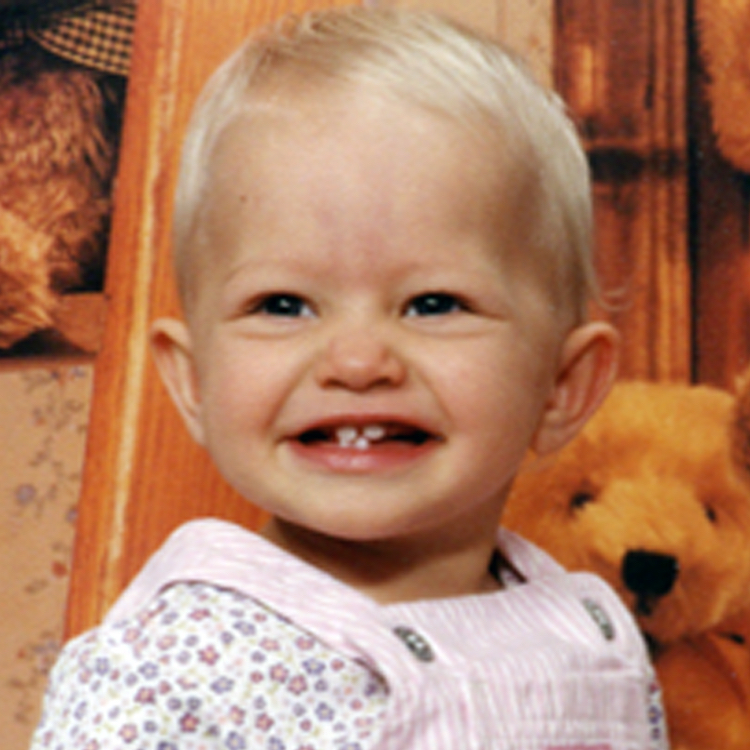Family Voices — Ellie’s Story
Ellie died when the changing table attachment on a play yard came down on the back of her neck as she stood up. She was thirteen months old.

Submitted by her mother, Lisa
On a family trip to Idaho, Ellie’s dad, Tom, went to wake her up from a nap in her play yard. Tom slowly crept open the door to his childhood room to a horrific sight—Ellie’s head was caught in between the bottom side of the play yard’s changing table attachment and the side rail of the play yard. He rushed to her, flung the attachment to the floor, and tried to get Ellie to respond. But there was nothing. She was gone.
In addition to having no locking mechanism, the design of the Graco play yard and changing table had a deadly flaw that resulted in Ellie’s death. On the underside of the changing table attachment, there were two semi-circle indents. These semi-circle portions locked Ellie’s neck like a lunette on a guillotine. It took just minutes for Ellie to suffocate in this entrapment.
As parents, Tom and I thought that the products we purchased Ellie were safe.
The death trap set-up that killed our daughter could have been avoided had Graco tested the product for all possible dangers, including ones that unknowing infants, curious toddlers, and busy preschoolers can get themselves into.
What’s Happened Since Ellie’s Death?
In 2008, President Bush signed the Consumer Product Safety Improvement Act which required strong standards for children’s products and that all durable children’s products come with product registration cards so that the owners can learn of recalls directly from the manufacturer.
On February 28, 2013, a strong standard was put in place for all play yards or mesh-sided portable cribs. These new standards include sturdier mattress attachments, stronger corner brackets, and side rails that resist forming a sharp V when folded to prevent more strangulations. The new standard includes requirements for attachments to avoid the scenario that killed Ellie.
While the crib that killed Ellie falls under the play yard standard, the U.S. also signed into law strong standards for regular cribs. Any crib made after June 28th, 2011 will require cribs to meet tough testing standards, have improved mattress support, prohibit drop sides, and have stronger hardware and slats.
How You Can Take Action
To take action and help prevent further incidents, injuries, and deaths,
there are a number of things you can do:
- Follow the ABCs of safe sleep at every sleep time: 1) Baby is Alone and has their own separate sleep space. 2) Baby is placed to sleep on their Back, and 3) baby sleeps in a Crib, play yard or bassinet that meets the federal safety standard.
- Remove other products such as crib bumper pads, pillows, positioners, extra padding, blankets, stuffed animals, or toys from the sleep environment.
- Share KID’s safe sleep PSA.
- Report any incidents to the CPSC at SaferProducts.gov.
Check out our action steps for all children’s products here.
More Information on Cribs
Although mandatory standards exist for cribs, only recently has an effort been made to strengthen those standards and require testing and verification of new cribs. Because of these standards, all cribs must include proper assembly instructions and diagrams as well as cautionary and warning labels as required by federal law.
More information on Safe Sleep
A safe sleep environment is the one place parents and caregivers can place an infant and know they will be safe, even as the parent sleeps or attends to other things. Infants sleep safest following the ABC’s of safe sleep—Alone, on their Back and in a Crib, bassinet or play yard that meets federal standards and hasn’t been recalled. AAP also recommends babies sleep on a flat surface and unrestrained. Nothing should be in the crib except a firm mattress with a tight-fitting sheet.
View our safe sleep video to learn more about how to keep your baby safe while sleeping.
